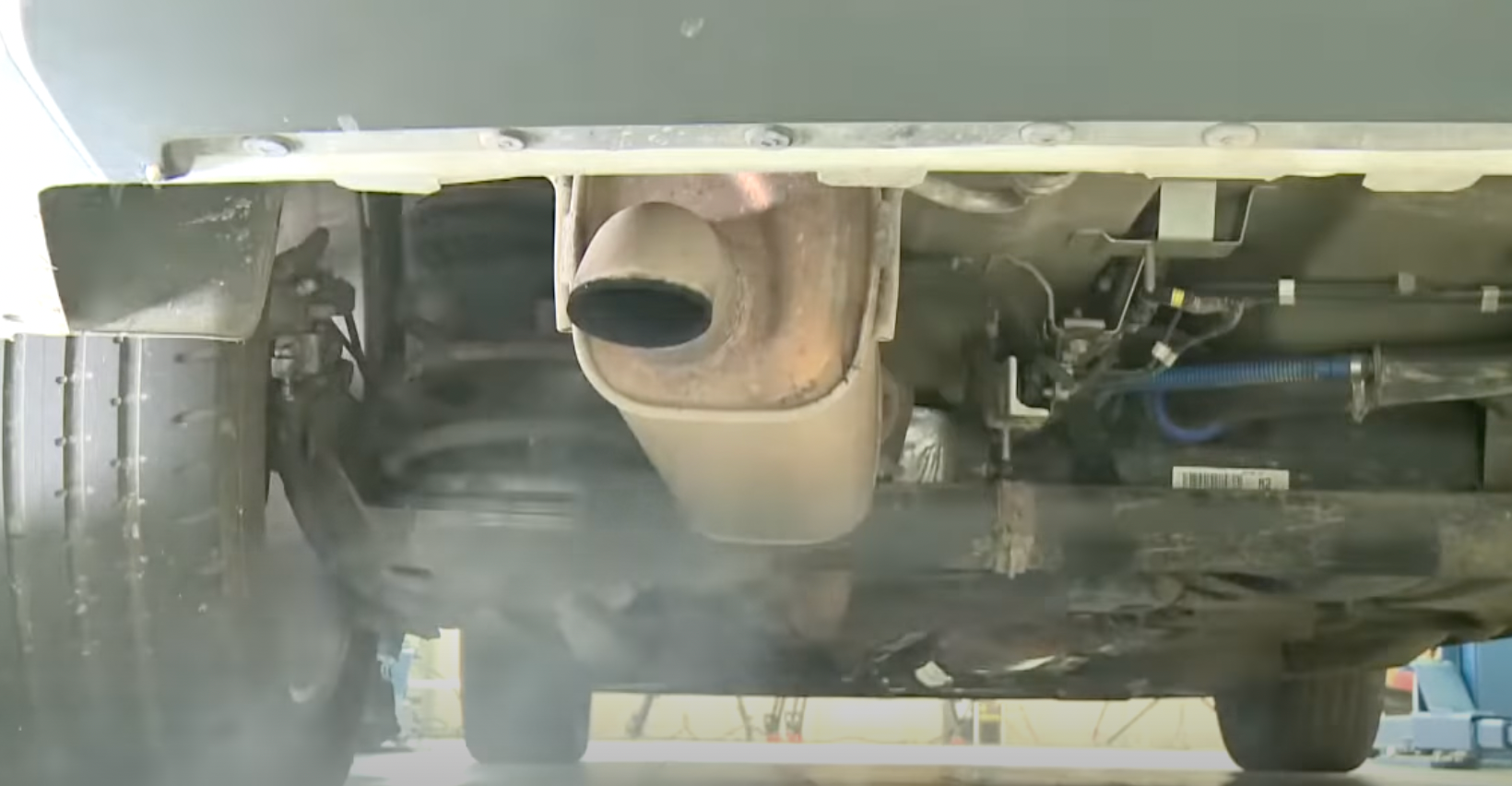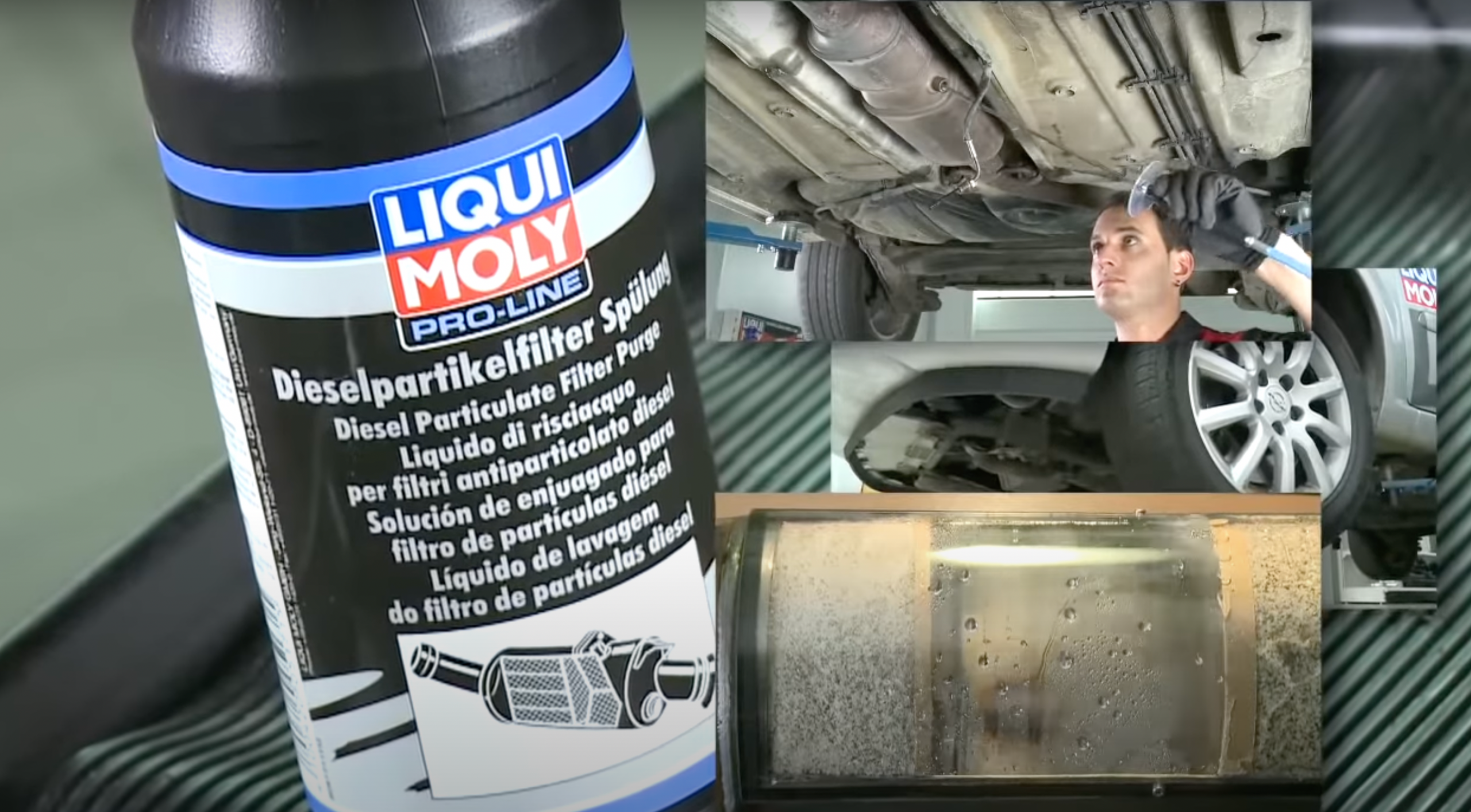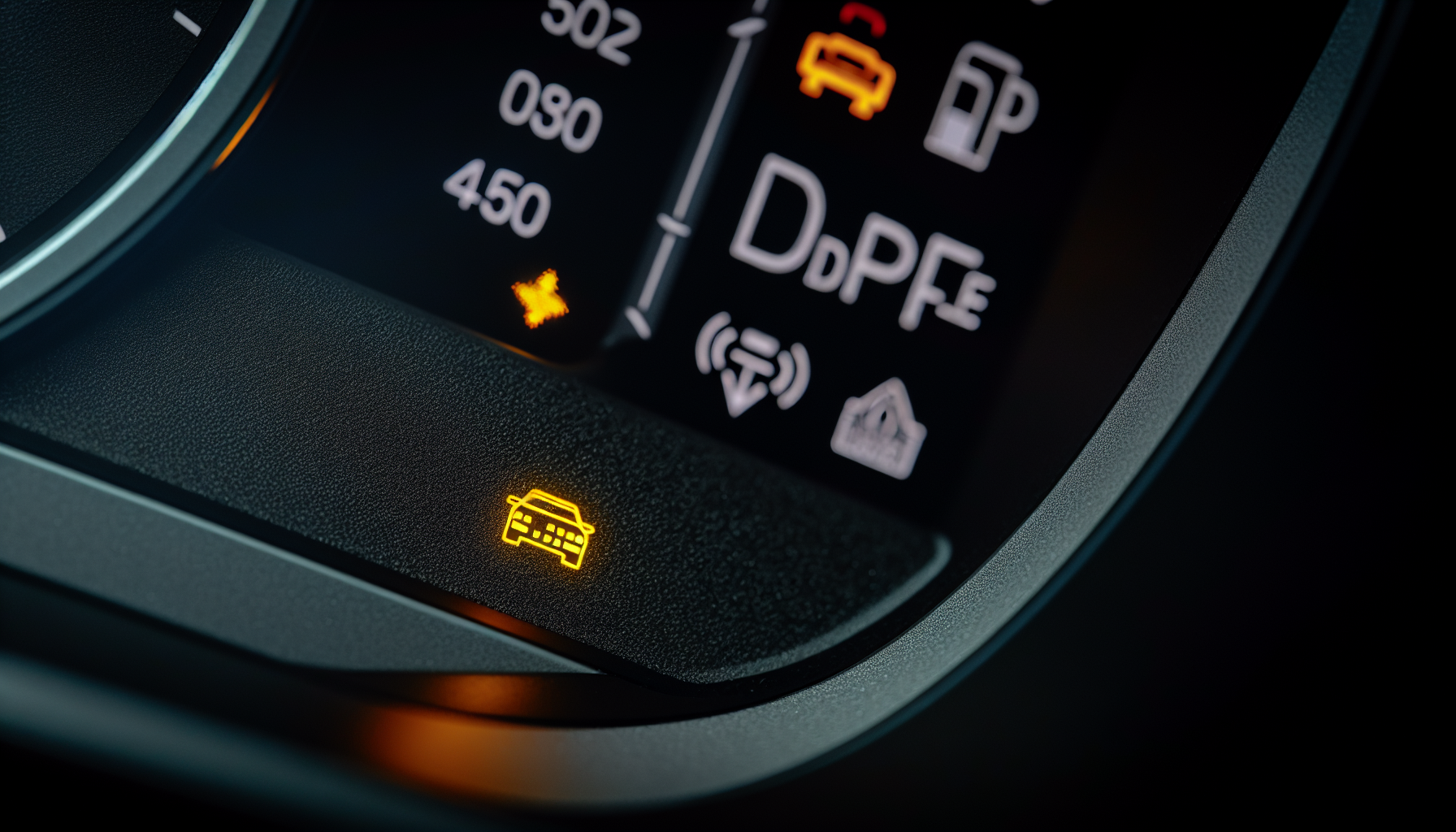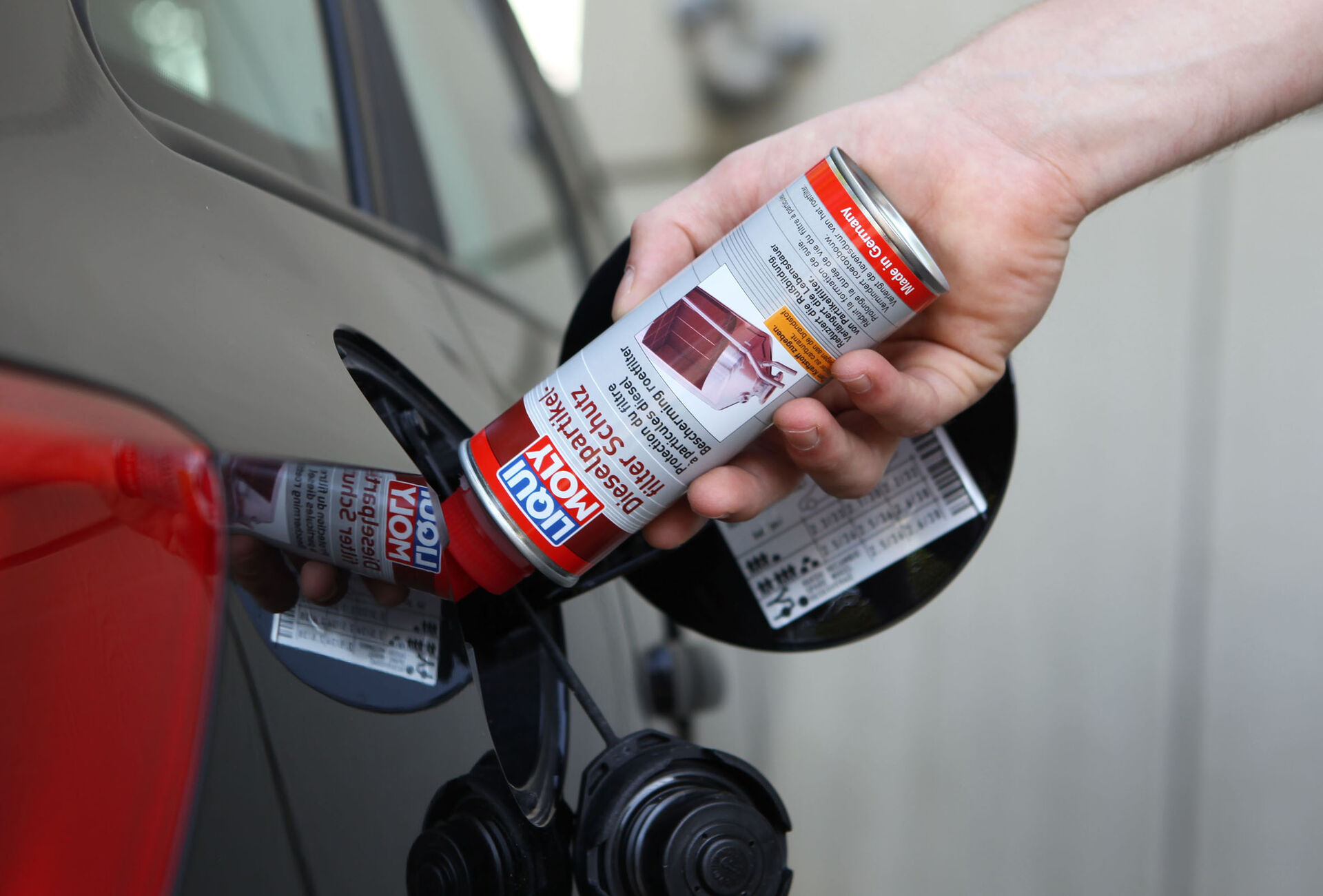If you’re facing the challenge of a clogged diesel particulate filter (DPF), you’re likely seeking an easy dpf cleaning solution that’s both simple and effective. With maintenance being a crucial element to vehicle performance and emissions control, this guide is tailored to give you a no-nonsense approach to restoring your DPF’s function without the hassle. We’ll arm you with easy-to-follow steps, signs that indicate your DPF needs attention, and preventative measures to keep your filter clear and your vehicle running smoothly.
Key Takeaways
The diesel particulate filter (DPF) is essential for trapping particulate matter and ensuring emission control, consisting of a filter substrate, diesel oxidation catalyst, and sensors to monitor efficiency and manage the regeneration process.
DPF maintenance including regular cleaning or forced regeneration is crucial to avert expensive replacements and maintain vehicle performance, which can be done through DIY methods, professional services, or attentive driving habits that promote passive regeneration.
Neglecting DPF maintenance can lead to severe consequences such as costly repairs or replacements, decreased fuel efficiency, and adverse environmental impacts due to increased emissions of harmful pollutants.
Understanding Diesel Particulate Filters

A diesel particulate filter (DPF) is a device installed in most new diesel vehicles, particularly those with diesel engines, designed to trap particulate matter such as minute particles and soot in the exhaust gases. Keeping these filters clean is vital for their function and effective reduction of harmful pollutants. DPFs, by capturing and storing particulate matter, significantly contribute to environmental protection from diesel emissions.
Comprehending the DPF involves not only grasping its role in emissions reduction but also getting acquainted with its structure and operation. From the filter substrate to the diesel oxidation catalyst and sensors, each component plays a crucial role in the DPF’s operation. We’ll delve further into these components and their collaborative effort in trapping and eliminating harmful particles.
Components of a DPF
A diesel particulate filter (DPF) consists of three main parts:
The filter substrate: typically made of a ceramic material that can withstand high temperatures and is designed to trap particulate matter. This substrate is where the actual filtration happens, capturing and holding onto harmful particles as they pass through.
Diesel oxidation catalyst: helps to convert harmful gases, such as carbon monoxide and hydrocarbons, into less harmful substances.
Sensors: monitor the performance of the DPF and provide feedback to the engine control unit (ECU) to optimize the regeneration process.
The components of a diesel particulate filter (DPF) system include:
The diesel particulate filter, which traps and collects harmful particles
The diesel oxidation catalyst, which reduces carbon monoxide, hydrocarbons, and some particulate matter through oxidation
The sensors, which monitor the level of particulates and the efficiency of the filter, aiding in the regeneration process
These components collectively function to capture harmful particles while maintaining the DPF’s effectiveness.
How DPFs Work
Grasping the functionality of a diesel particulate filter (DPF) is fundamental for its proper upkeep. DPFs trap soot particles from the engine exhaust primarily through two methods: depth filtration inside the filter pores and surface filtration along the channel walls. The most common DPFs involve a ceramic honeycomb structure with plugged channels, which forces exhaust gases to flow through the porous walls, effectively capturing soot particles. These filters can achieve trapping efficiencies greater than 99%, ensuring minimal soot and ash release into the atmosphere.
The regeneration process in DPFs involves burning off the captured soot at high temperatures, converting it into less harmful substances including carbon dioxide, which are then expelled through the exhaust. This regeneration process is classified into active and passive types. Active regeneration requires additional heat input, while passive regeneration occurs naturally at lower temperatures through NO2 oxidation of the soot. Vehicles are equipped with sensors to monitor the levels of particulate matter in the DPF by measuring pressure differentials and temperature changes in the exhaust before and after it passes through the filter.
Easy DPF Cleaning Methods
With a clear understanding of what a DPF is and its operation, we can now explore simple methods to maintain its cleanliness and effectiveness. These methods range from DIY cleaning with a pressure washer to forced regeneration and professional DPF cleaning services. Each method has its own advantages and can be chosen based on your comfort level, the extent of DPF clogging, and the resources at your disposal.
DIY Cleaning with a Pressure Washer

One common and straightforward method to clean your DPF is manually removing it from the vehicle and cleaning it with a pressure washer. Ensure the DPF is cool before you start, ideally letting it cool down overnight to prevent thermal shock. Place it on an absorbent mat during cleaning to catch soot and prevent it from entering the drainage system.
Start the cleaning from the interior side of the DPF from the rear, ensuring the entire surface is covered and water flushes through the filter element. After cleaning from the rear, wash the DPF from the flange side, using only hot water without solvents or chemicals to avoid potential damage during future regeneration cycles. After pressure washing, use compressed air to blow through the DPF to eliminate any remaining water before reinstallation.
Forced Regeneration
Forced regeneration serves as another method beneficial in cleaning the DPF. It involves driving the vehicle in a way that increases the exhaust temperature, thereby initiating an automatic cleaning process of the DPF. This method can be manually activated by the driver, but it typically happens automatically by the vehicle’s computers that inject extra fuel to generate the necessary heat when the right driving conditions, such as speed over 50 mph (80 km/h), are met.
Sensors in the DPF system, particularly the differential pressure sensor, monitor the level of particulate matter and trigger active regeneration by the engine control unit (ECU) when blockage is detected and driving conditions allow.
Diagnostic scan tools are necessary to perform the following tasks:
Override soot levels to perform forced regeneration
Scan for trouble codes
Monitor soot levels and DPF load
Reset DPF lights after completion of the forced regeneration.
Professional DPF Cleaning Services

While DIY methods and forced regeneration are effective, professional DPF cleaning services provide a deeper clean using specialized tools, chemicals, and expertise that go beyond the scope of DIY methods. Opting for professional DPF cleaning can be beneficial for those unwilling or unable to perform the cleaning themselves or when the filter is excessively clogged and beyond the scope of DIY methods.
Professional services restore the DPF to its optimal condition using the dpf cleaning process, which includes specialized techniques like high-pressure air blasting, ultrasonic cleaning, and chemical treatments, typically beyond the capabilities of DIY solutions. Some service providers, such as certain Cummins distributors in the US, offer cleaning equipment specifically for Dodge DPFs, catering to specific vehicle brands and types.
Manufacturers like Cat and Detroit provide Reman DPFs, which offer a convenient exchange service, avoiding the downtime associated with waiting for a DPF to be cleaned.
Signs Your DPF Needs Cleaning
Actively identifying signs that your DPF requires cleaning can save you future expensive repairs and replacements. Some common symptoms of a clogged DPF include:
Reduced engine power
Increased fuel consumption
Difficulty starting the engine
A notable decline in overall vehicle performance, such as diminished acceleration and power
These symptoms could signal a DPF requiring cleaning.
Apart from performance issues, emission of more visible smoke from the exhaust, especially black smoke, can be a symptom of incomplete combustion due to a dirty DPF. An unusual smell from the exhaust, similar to burning rubber or plastic, might signal that the DPF requires cleaning. Unusual noises from the exhaust system, such as increased engine noise or a chugging sound, may also signal a blocked DPF.
Persistent DPF warning light after multiple driving cycles may suggest a need for manual regeneration or a professional clean-up. Flashing DPF lights are a critical indicator that the DPF is full of soot and requires immediate attention to prevent damage.
Warning Lights

Your vehicle’s dashboard is a critical source of information when it comes to the health of your DPF. The most common DPF warning light is an icon on the dashboard that looks like a filter with dots in the center, which illuminates when the filter requires attention. This warning light typically appears as a yellow or amber light on the dashboard, often shaped like a filter or a chimney with smoke.
If the DPF warning light comes on, you have a few options:
Drive the vehicle at highway speeds to enable the active regeneration process.
Take the vehicle to a service center for manual regeneration if necessary.
If the DPF warning light persists after several driving cycles, manual regeneration or professional cleaning may be required.
If the engine management light also illuminates alongside the DPF warning light, it may signify a more severe issue with the filter. Modern diesel vehicles use onboard diagnostics systems to detect problems with the DPF, which trigger warning lights on the dashboard necessitating professional attention.
Poor Engine Performance
Poor engine performance is another sign that your DPF may need cleaning. Common symptoms of a clogged DPF include:
Reduced engine power
Increased fuel consumption
Difficulty starting the engine
Sluggish acceleration
A clogged DPF restricts exhaust flow leading to a loss of horsepower and torque.
Some signs of a clogged DPF include:
Difficulty in starting the vehicle
Unexpected increase in engine idling speed
Engine stalling
Misfires
Increased fuel consumption
These issues can occur if the back pressure caused by a clogged DPF disrupts the normal air-fuel mixture in the engine. The engine may compensate for the restricted exhaust system by injecting more fuel.
Regular DPF cleaning by professionals can lead to significant improvements in fuel economy and engine performance, as it reduces engine back pressure. Ignoring DPF cleaning can lead to a chain of mechanical issues that may result in costly repairs, decreased turbo lifespan, and a significant decline in fuel efficiency. An increase in the vehicle’s exhaust gas temperature might occur during frequent regeneration cycles, potentially signaling a DPF in need of cleaning.
Drivers may notice a consistent increase in the engine’s idle speed, which is a sign that the vehicle is attempting to regenerate the DPF more often.
Frequent Regeneration Cycles
Frequent regeneration cycles can also indicate a DPF reaching its capacity for soot, requiring more frequent burn-offs to clear the filter. Shortened intervals between regenerations could be a sign of excessive soot production or a malfunctioning DPF system. If a vehicle requires frequent manual regenerations, it suggests that the filter is heavily clogged and may need professional cleaning.
A DPF that needs cleaning may lead to the vehicle undergoing regeneration more frequently, which is an indication of excessive soot accumulation.
Preventative Maintenance for DPF Longevity
Preventative maintenance, encompassing regular professional cleaning, can greatly prolong the life of the diesel particulate filter (DPF) and guarantee its effective operation. Here are some steps you can take to maintain your DPF:
Regular engine maintenance and cleaning by professionals can prevent carbon build-up and address issues affecting fuel economy and engine performance.
Professional cleaning can prevent increased fuel consumption and the need for expensive engine repairs by preventing a DPF from becoming clogged.
Using high-quality diesel fuel can minimize the risk of DPF blockages and contribute to optimal filter and engine performance.
By following these steps, you can ensure that your DPF remains in good condition and functions properly, ensuring optimal performance. We hope you find this article helpful in maintaining your DPF’s optimal performance.
Regular oil changes play a crucial role in reducing soot production that could result in DPF clogging, thus extending the filter’s lifespan.
Regular Inspections
Scheduling regular DPF inspections by a qualified technician is essential for early detection of potential issues and maintaining filter health. Inspection of the DPF should include checking for:
Surface damage
Staining
Cracks
Foreign matter
Fusion
Brick slippage
Can damage
Flange damage
The exhaust side of the DPF provides significant details for assessing the condition of the core, and good lighting is crucial for a thorough visual inspection.
DPFs are recommended to be cleaned every 75,000 to 100,000 miles to maintain their efficiency, and a DPF can last many years, even over a decade, with proper maintenance.
Fuel Additives

Fuel additives can also play a crucial role in maintaining DPF health. DPF cleaning additives commonly contain catalysts such as ferrocene (iron oxide), cerium (ceric oxide), and platinum to enhance the regeneration process. Regular use of DPF cleaners can prevent clogging, lead to better engine efficiency, and promote cleaner diesel engine operation.
However, it is essential to avoid fuel additives that can negatively react with the DPF material, as they can harm the filter. Insufficient additives in supermarket fuels or sensor malfunctions can contribute to DPF clogging and decreased fuel efficiency.
Proper Driving Habits
Your driving habits can significantly impact the health and longevity of your DPF. Regular and frequent highway driving helps maintain DPF health by enabling the filter to reach optimal operating temperatures necessary for self-regeneration, thus avoiding frequent clogging. Aggressive driving behaviors, such as harsh acceleration and rapid gear changes, can create excessive soot, which strains the DPF and may lead to increased risk of clogging.
Adopting a smoother driving style, which includes gentle acceleration and making use of engine braking, aids in reducing soot production and supports the optimal functioning of the DPF. Strategically planning journeys to avoid peak traffic times and congested routes can mitigate the detrimental effects of stop-start conditions on DPF health, allowing for more consistent regeneration conditions.
The Cost of Neglecting DPF Maintenance
Disregarding DPF maintenance can result in expensive outcomes. A neglected DPF can lead to the need for complete filter replacement, which can cost from several hundred to several thousand dollars, varying with the vehicle make and model. Additional costs may accrue in repairing or maintaining the vehicle’s DPF system to prevent future clogging.
Frequent professional DPF cleaning can significantly improve engine performance and prevent expensive repairs. Maintained DPFs through professional cleaning have shown to potentially increase fuel mileage by up to 40%, demonstrating significant cost savings over time.
Expensive Repairs or Replacements
The replacement of a diesel particulate filter (DPF) can be significantly expensive, with costs differing considerably. On average, DPF replacement costs range from $1000 to $4000, and prices can be even higher for high-end models, although aftermarket options could reduce the expense.
To deter removing a vehicle’s DPF as a way to evade replacement costs, legal penalties include fines up to £1,000 for cars and £2,500 for light goods vehicles, along with the risk of invalidating the vehicle’s insurance.
Decreased Fuel Efficiency
A diesel vehicle consuming more fuel than usual could indicate a clogged DPF or an issue with the fuel tank. A clogged DPF can lead to a fuel economy penalty due to increased system backpressure and demand for more frequent regeneration events.
A blocked or malfunctioning DPF can cause:
inefficient fuel-to-air ratio management
making the engine work harder
reducing fuel efficiency
increasing operational costs through more frequent refueling.
Environmental Impact
Disregarding DPF maintenance has implications not only in terms of cost or performance but also environmentally. Diesel particulate filters (DPFs) are essential for controlling air quality because they capture harmful particulate matter, such as soot, from exhaust gases. A properly maintained DPF not only helps in improving human health but also ensures that vehicles comply with strict emission regulations.
Clogged or improperly maintained DPFs can lead to:
An increase in particulate matter emissions
Adverse effects on public health
Compromised air quality
Serious health risks
Legal repercussions, including fines for violating emission standards
Operating a vehicle with a malfunctioning or clogged DPF significantly raises the amount of pollutants released into the environment, posing serious health risks. Failure to maintain the DPF not only compromises air quality and health but can also lead to legal repercussions, including fines for violating emission standards.
Summary
In conclusion, diesel particulate filters (DPFs) play a vital role in reducing harmful emissions from diesel vehicles, and their regular cleaning and maintenance can significantly enhance vehicle performance and longevity. From understanding the components of a DPF and how it works to recognizing the signs that it needs cleaning and adopting proper maintenance practices, every step is crucial in ensuring the health of your DPF. So, don’t neglect your DPF; it’s not just about saving on repair costs or fuel efficiency, it’s also about our health and the environment.
Frequently Asked Questions
What is the easiest way to clean DPF?
The easiest way to clean a DPF is by adding a DPF cleaner, using a pressure gun and compressed air to remove loose ash, and pressure-washing the DPF with heated water. If these methods fail, consider scheduling service at a service center.
Can you unblock a DPF yourself?
Yes, you can attempt to clear the DPF yourself by burning the soot away, but if the blockage persists, it may require professional cleaning or replacement, which can be expensive.
What is best DPF cleaning solution?
The best DPF cleaning solution is the Rislone DPF Clean – Diesel DPF, Exhaust & Emissions System Cleaner, which has been tested and proven to be the most potent diesel DPF cleaner on the market. Try it out if you want an effective solution for your DPF cleaning needs.
What is a diesel particulate filter (DPF)?
A DPF is a device installed in diesel vehicles to reduce harmful emissions by trapping particulate matter like soot in the exhaust gases.
How often should a DPF be cleaned?
You should clean your DPF every 75,000 to 100,000 miles to ensure its efficiency and proper function.
